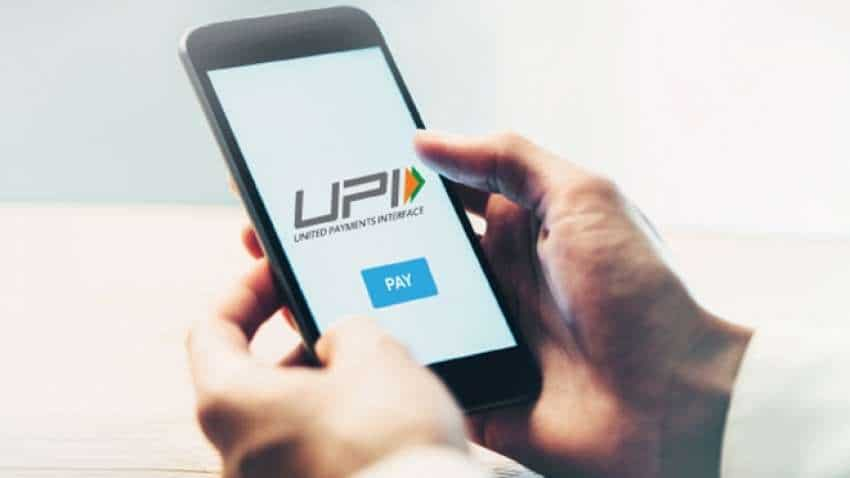UPI to stay on top; BNPL, digi currency to drive digital payments growth in next 5 years: Report
Unified Payments Interface (UPI), Buy Now Pay Later (BNPL), Central Bank Digital Currency (CBDC) and offline payments will drive growth of digital payments in India in the next five years, PwC India said in a report.

Retail online transaction platform UPI will likely continue to dominate the digital payments space in the country even as newer methods such as BNPL and digital currency are expected to define the future of payments, a study has said.
Unified Payments Interface (UPI), Buy Now Pay Later (BNPL), Central Bank Digital Currency (CBDC) and offline payments will drive growth of digital payments in India in the next five years, PwC India said in a report.
See Zee Business Live TV Streaming Below:
UPI is expected to continue to be the major contributor in the digital payments space, followed by BNPL, it said.
The Indian digital payments market saw steady growth at a CAGR of 23 per cent (volume wise), and is expected to reach 217 billion (21,700 crore) transactions in FY26 from 59 billion (5,900 crore) in FY22, said the report titled 'The Indian Payments Handbook ? 2021-26'.
In 2020-21, UPI transactions reached a record 22 billion (2,200 crore), and it is expected to reach 169 billion (16,900 crore) by 2025-26, growing at a CAGR (compounded annual growth rate) of 122 per cent, it said.
Partnerships with other countries in Asia to enable low-value transactions and cross-border remittances through UPI will contribute to this growth. BNPL, which is currently estimated at Rs 363 billion (Rs 36,300 crore), is expected to reach Rs 3,191 billion (Rs 3,19,100 crore) by the end of 2025?26, according to the report.
"We expect the payments industry to focus heavily on enhancing customer experience and providing customer options for payment, enhancing security, undertaking innovations in technology like distributed ledger technology (DLT) and emerging tech like IoT (Internet of Things) over the next couple of years.
"With the efforts and initiatives of key stakeholders such as regulators, banks, payment/fintech companies, card networks and service providers, the industry is going to see tremendous growth in the coming years," Mihir Gandhi, Partner & Payments Transformation Leader, PwC India, said.
Presenting a snapshot of the trends that will contribute to growth of digital payments industry in India, the report said that existing products and emerging use cases such as UPI, Fastag, transit (NCMC) and cards will continue to make inroads and gain additional wallet share of the Indian customers. These methods will continue to drive the growth in adoption and transactions numbers, said the report.
Enabling recurring payments and IPO subscriptions along with cross-border remittances will provide a boost to UPI. Parking and fuel payments are being explored as new use cases for Fastag, PwC report said further.
"The emergence of new players with a focus on digital journeys and expanding customer base in tier 3 and 4 locations will drive the growth for cards. Integration of NCMC with debit and credit cards alongside prepaid with news of public transport operators going live with acceptance infrastructure will bode well for the transit segment."
Further, it said, with the RBI allowing to expand the scope of tokenisation to cover additional use cases like laptops, desktops, wearables, IoT devices along with card-on-file tokenisation (CoFT), with enhanced card-related security, will ensure that the overall customer check-out experience remains intact.
This is significant for leading merchants in grocery and retail, food delivery and apparel, among others who experience repeated purchase transactions from their customers, said the report.
With regard to offline payments, PwC report said the recent RBI guidelines on offline payments have provided a much-needed impetus to the segment.
"Poor connectivity and lack of access to online payment methods have opened up an opportunity for offline payments. Efforts have been made by various players in the past to develop and deploy such solutions but with limited success."
They will give the necessary directions to the participants in developing offline payments solutions. Further, it will encourage banking and non-banking companies to collaborate with the solution developers, as per the report.
In the corporate payments space, financial institutions and service providers are offering payment solutions which can fulfil all the requirements of organisations and increase their operational efficiencies.
Integrating payments into enterprise resource planning software that helps to automate essential business functions, and utilising payments data to improve operational efficiency and optimise essential processes are some of the use cases.
On the proposed CBDC, it said, given the present scenario, the central bank's digital currency will need to co-exist along with the existing rails rather than replace them.
"Some of the prominent use cases of CBDC that are applicable in the Indian context are programmable direct benefit transfer, online and offline retail payments and cross-border remittances," it said.
Get Latest Business News, Stock Market Updates and Videos; Check your tax outgo through Income Tax Calculator and save money through our Personal Finance coverage. Check Business Breaking News Live on Zee Business Twitter and Facebook. Subscribe on YouTube.
RECOMMENDED STORIES
01:09 PM IST











 UPI Lite: RBI raises wallet limit to Rs 5,000, transaction limit to Rs 1,000
UPI Lite: RBI raises wallet limit to Rs 5,000, transaction limit to Rs 1,000 Only 0.8% of UPI transactions face 'technical declines' now: NPCI
Only 0.8% of UPI transactions face 'technical declines' now: NPCI Debit card-based transactions drop 8% in September as UPI payments surge: RBI data
Debit card-based transactions drop 8% in September as UPI payments surge: RBI data PhonePe, Liquid Group partner to expand UPI QR payment service in Singapore
PhonePe, Liquid Group partner to expand UPI QR payment service in Singapore NPCI launches Bharat BillPay for B2B category and delegates payment service feature
NPCI launches Bharat BillPay for B2B category and delegates payment service feature